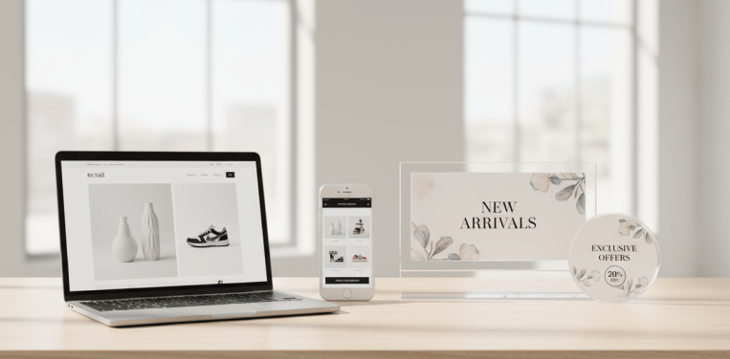How Retailers Can Move From Competitive Parity to Competitive Foresight
How Retailers Can Move From Competitive Parity to Competitive Foresight
In today’s retail environment, being competitive is no longer enough. Most retailers have access to similar data, use comparable pricing tools, and monitor the same competitors. The result is a cycle of competitive parity, where everyone reacts to the same signals at the same time, and true advantage disappears.
The brands that stand out are those that see ahead of the curve, anticipating competitor movements, customer reactions, and market shifts before they happen. This is what defines competitive foresight.
With Hypersonix Competitor AI and Pricing AI in Retail, retailers can move from reacting to yesterday’s data to predicting tomorrow’s outcomes. Instead of matching prices, they can shape the market. Instead of waiting for trends, they can lead them.
To understand how retailers can make this shift, it’s important to first examine why so many remain trapped in the cycle of reactive competition.
Why Competitive Parity Limits Growth
Retailers often believe that monitoring competitors is the same as staying ahead. However, traditional competitive tracking is backward-looking. It tells retailers what happened, not what is likely to happen next.
When every brand relies on the same daily reports, public data, and rule-based pricing, the market becomes synchronized. Everyone lowers or raises prices in response to the same cues, leaving no room for differentiation.
This approach creates three recurring problems:
-
-
-
Price compression – Constant matching erodes margins and conditions customers to expect uniformity.
-
Lost agility – By focusing on competitor movement rather than customer intent, retailers miss early signals of demand change.
-
Stalled innovation – Teams become reactive, managing risk instead of driving strategy.
-
-

To move beyond parity, retailers need visibility that goes deeper than surface-level competition. They need systems that can anticipate competitor actions, understand customer sensitivity, and simulate potential outcomes before committing to a change.
This is where AI-powered foresight transforms retail strategy.
From Monitoring to Predicting: The Power of Competitive Foresight
Hypersonix Competitor AI enables retailers to evolve from passive observers to active predictors. By integrating competitive data with predictive analytics and elasticity modeling, Hypersonix provides a forward-looking understanding of market dynamics.
Rather than showing what competitors did, the system reveals what they are likely to do next and how those moves could affect demand and margin.
Here’s how this foresight works in practice:

-
Real-Time Competitive Intelligence
Retail competition happens in minutes, not months. Hypersonix Competitor AI continuously tracks competitor pricing, promotions, and assortment changes across marketplaces, direct websites, and channels.
However, unlike simple data aggregators, it uses AI-powered product matching to compare true equivalents instead of similar-looking SKUs. This ensures that decisions are based on accurate, like-for-like data rather than misleading comparisons.
The outcome is clear visibility into your competitive position, what products are underpriced, overpriced, or optimally positioned at any given moment.
-
Predictive Pricing Intelligence
The key to competitive foresight is prediction. Pricing AI in Retail uses predictive models to forecast how competitors will adjust their prices based on patterns such as promotional cadence, cost changes, and historical elasticity.
For example, if a competitor traditionally launches discounts two weeks before a holiday, the system anticipates that move and alerts teams ahead of time. This allows retailers to plan strategic responses rather than reacting in real time.
By modeling multiple pricing outcomes, Hypersonix helps retailers maintain profitability while staying one step ahead of market shifts.
-
Elasticity-Driven Competitive Strategy
Being competitive does not always mean matching the lowest price. Pricing AI in Retail leverages elasticity modeling to determine whether a competitor’s price change truly influences customer demand or simply affects perception.
This insight allows retailers to identify where they can hold premium pricing without losing volume, and where a strategic adjustment can drive incremental share.
Through elasticity-driven analysis, retailers replace guesswork with precision, balancing profitability and competitiveness with measurable confidence.
-
Explainable Intelligence for Confident Action
Predictive systems are only useful if teams trust them. Hypersonix builds that trust through Explainable AI, which clearly outlines why a price recommendation or market forecast was made.
Each insight includes the triggering factor, the projected financial impact, and the confidence level of the prediction. Pricing and merchandising teams can see exactly how competitor behavior, elasticity trends, and historical data interact to inform recommendations.
This transparency transforms AI from a black box into a trusted decision partner.
Connecting Data to Execution
Foresight is only powerful when it turns into action. Hypersonix Price Execution Monitoring ensures that every pricing or promotional decision is accurately implemented across all digital and physical channels.

It validates live pricing in real time, identifying mismatches or delayed updates that could undermine strategy. This ensures that competitive foresight translates seamlessly into market execution, protecting margin and customer trust.
Through this closed-loop integration of prediction, analysis, and execution, retailers gain end-to-end control of their competitive strategy.
From Competitive Parity to Competitive Foresight
The shift from parity to foresight is more than a technological upgrade — it is a cultural transformation. Instead of reacting to competition, retailers begin predicting market behavior with confidence and precision.
With Hypersonix Competitor AI and Pricing AI in Retail, they can identify opportunities before competitors move, plan targeted pricing strategies, and maintain disciplined profitability across every category.
Foresight empowers retailers to:
-
Anticipate market shifts rather than chase them.
-
Protect margins without sacrificing agility.
-
Build long-term pricing credibility rooted in intelligence, not imitation.
The difference between parity and foresight is simple. One waits to react. The other prepares to lead.
Conclusion
In the age of constant data and rapid competition, retail success belongs to those who see what others cannot. Hypersonix Competitor AI and Pricing AI in Retail give retailers the tools to shift from reactive parity to predictive foresight, transforming competitive data into actionable intelligence.
By combining real-time visibility, predictive modeling, and explainable insights, retailers can stop chasing the competition and start shaping the market.
Competitive foresight is not about predicting the future perfectly. It is about being prepared for it intelligently. With Hypersonix, that preparation becomes a measurable advantage.



-1.png)


